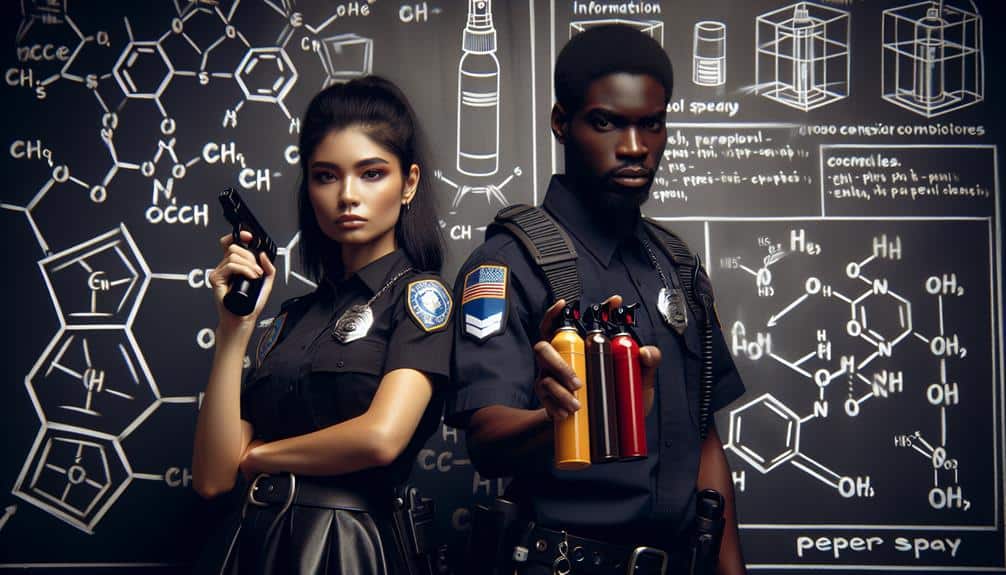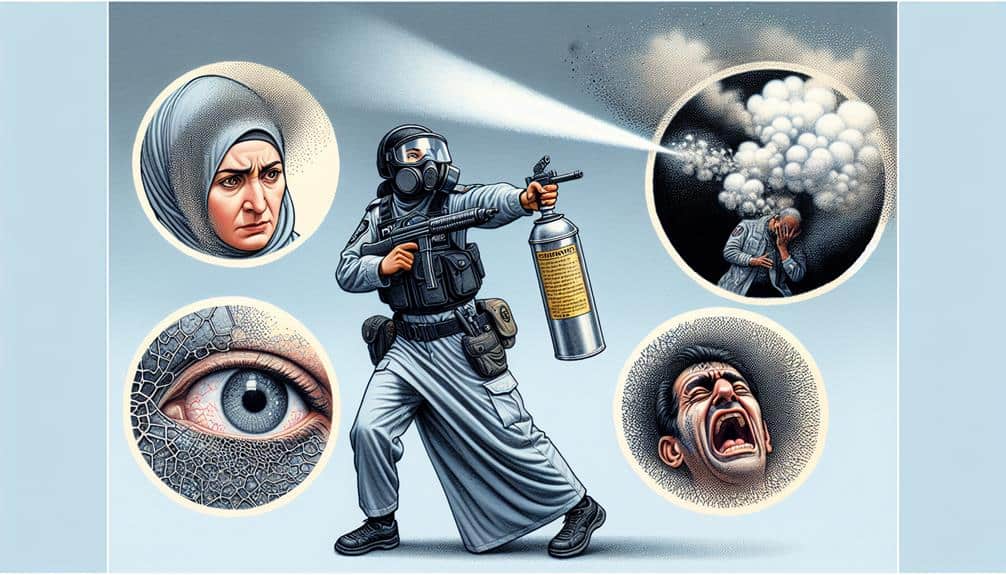
free shipping on orders over $25
We’re having a sale on all our products. Enter your email below to be notified about future sales.


We’re having a sale on all our products. Enter your email below to be notified about future sales.


You might wonder if cops use Mace or pepper spray. Well, here’s the scoop: they mainly use pepper spray. Even though Mace was all the rage in the ’60s, it originally contained CN tear gas. Nowadays, both Mace and pepper spray use oleoresin capsicum (OC), which is spicy hot stuff that causes serious burning and temporary blindness. Cops prefer pepper spray because it’s super effective and less toxic. Imagine your face on fire—yeah, that’s how it works! Officers get trained rigorously to use it safely. So, curious to know more about how these tools evolved and their nitty-gritty details?

Understanding the differences between Mace and pepper spray helps you make informed choices about self-defense tools. First off, you might think Mace and pepper spray are the same, but they’re not. Mace is actually a brand that’s been around since the 1960s, while pepper spray is a generic term for similar products. Originally, Mace contained CN tear gas, but nowadays, it uses oleoresin capsicum (OC), the same active ingredient found in pepper spray.
Now, let’s talk about how these sprays work. Both Mace and pepper spray are non-lethal self-defense tools designed to temporarily incapacitate attackers. When you spray someone with either, they experience intense burning sensations, difficulty breathing, and temporary blindness. Trust me, it’s not a pleasant experience for them.
Law enforcement has largely switched from using CN tear gas to pepper spray because it’s more effective and less toxic. So, when you see cops using these sprays, it’s more likely they’re using pepper spray, not the old-school CN tear gas.
Mace Security International, the company behind Mace, still holds trademarks for the term ‘mace’ in defense sprays, but in practice, pepper spray is what’s commonly used today.
The origins of Mace trace back to the 1960s when Allan Lee Litman and Doris Litman developed the original formula containing 1% chloroacetophenone (CN) tear gas. Imagine the scene—two inventors in a lab, mixing chemicals to create something that would forever change crowd control and personal defense. Their creation, initially called Chemical Mace, quickly gained popularity for its effectiveness.
But the story doesn’t end there. The Mace evolution continued as the original formula underwent changes. The timeline of its development looks something like this:
| Time Period | Key Event |
|---|---|
| 1960s | Original formula developed |
| 1970s | Widely adopted by law enforcement |
| 1987 | Mace brand acquired by Mace Security |
| Late 1980s – 1990s | Formula updated to oleoresin capsicum |
| 2000s to Present | Continued advancements and refinements |
You see, the original formula of CN tear gas was eventually replaced by oleoresin capsicum (OC), otherwise known as pepper spray, due to its increased effectiveness and reduced potential for long-term harm. Over the years, Mace has been refined and improved to better serve its purpose in law enforcement and personal defense.

Pepper spray’s potent composition, primarily made of oleoresin capsicum (OC), works swiftly to incapacitate aggressors by causing intense discomfort and temporary blindness. When you’re hit with pepper spray, you’re not just dealing with a single chemical irritant. This stuff is a nasty mix designed to trigger inflammatory reactions that can make you feel like your face is on fire.
Imagine opening your eyes and feeling an instant, searing burn. That’s the sensory overload from the OC kicking in. Your eyes slam shut, tears streaming down uncontrollably, making it impossible to see. Breathing becomes a challenge; it’s like inhaling a cloud of fiery needles, each breath more painful than the last. And let’s not forget the skin. Touching your face feels like you’ve dunked it in boiling water.
The effects don’t stop there, though. Your body goes into full panic mode, trying to cope with the overwhelming assault. It’s a brutal, non-lethal way to stop someone in their tracks.
You might be surprised to learn that police officers have largely shifted from using CN-based Mace to oleoresin capsicum (OC) spray for self-defense and crowd control. This change isn’t just about swapping one chemical for another; it reflects a big improvement in non-lethal force options. OC spray, better known as pepper spray, is the go-to tool now.
Training protocols guarantee that officers know how to use it effectively. They learn deployment tactics, like aiming for the face to quickly subdue someone. But it’s not without its controversies. Some argue that pepper spray is overused, especially during protests, leading to public outcry. People worry about its safety and potential misuse, sparking heated debates.
Public perception is mixed. Some see pepper spray as a necessary tool for maintaining order, while others view it as an instrument of oppression. There are even alternatives being explored, like using foam or gel versions that reduce the risk of bystanders getting affected.
Despite the debates, one thing’s for sure: pepper spray has become a staple in modern policing, and it’s not going away anytime soon.

Given the widespread use of pepper spray by law enforcement, understanding its legal and safety considerations is essential for ensuring its appropriate application.
You can’t just go spraying this stuff willy-nilly—there are serious safety precautions and regulations in place. For starters, officers undergo rigorous training standards to make sure they’re compliant with all the rules. They need to know the right way to use pepper spray to prevent any unnecessary harm and keep everyone safe.
Risk assessment plays a huge role. Before using pepper spray, officers have to evaluate the situation carefully. They need to think about the potential risks and how to prevent any accidents or injuries. It’s not just about subduing a suspect—it’s about doing it safely.
And let’s not forget the legal side of things. There are strict regulations that dictate when and how pepper spray can be used. Officers must always stay within these guidelines to avoid any legal trouble.
You might wonder if cops use Mace or pepper spray. They primarily use pepper spray for chemical defense and self-protection. It’s a non-lethal option, preferred for its effectiveness in subduing suspects and crowd control.
For self defense options, you’ll find pepper spray is better than Mace. Modern chemical agents like pepper spray are more effective and less toxic, enhancing personal safety. Law enforcement prefers using pepper spray for these reasons.
Police recommend OC pepper spray for self-defense sprays due to its effectiveness and safety. It’s suitable for civilian usage and legal in most areas. Always verify local spray legality to guarantee compliance with regulations.
Police don’t use bear spray because it’s a bear deterrent designed for wildlife protection. It’s less effective on humans. Pepper spray is formulated for law enforcement, making it more suitable than hiking equipment meant for bears.
Para Bellum Defense
133 Palm Drive
Winter Haven, FL 33880
Telephone: 585-284-6669

One Response